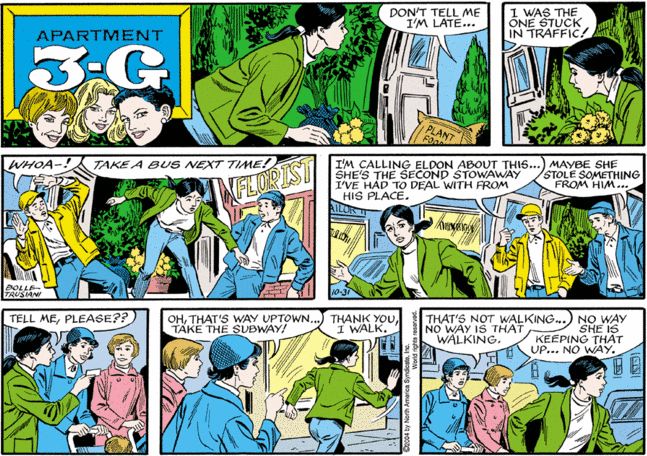I promise to ignore the obvious racial overtones
Post Content
Family Circus, 11/1/04

A week ago, I would have scoffed at the idea that any child Jeffy’s age would even know what marbles were. However, Monday I went to a nine-year-old’s birthday party, and you know what the gift that made the biggest impression was? Marbles! I was shocked, and a little horrified. You know, when I was a kid, we had to play crappy video games on an Atari 2600 (and what person born during the 1970s doesn’t remember the bitter, bitter disappointment that was the Atari 2600 version of Pac-Man?). And so many people of my generation went on to slave away selflessly in the computer industry, for almost no pay, in order to produce whiz-bang, photorealistic, ultraviolent video games so that their kids didn’t have to suffer like we had suffered. And this is how they’re repaid? It just makes me sick.
This panel illustrates one of my favorite narrative oddities in the Family Circus: dialogue that’s half in word balloons, half in quote marks below the panel, and all half-assed. Also, sometime this week someone on the Family Circus production line decided to kick the caption font up from Roman to boldface. Maybe the whole family’s just been shouting a lot lately.



